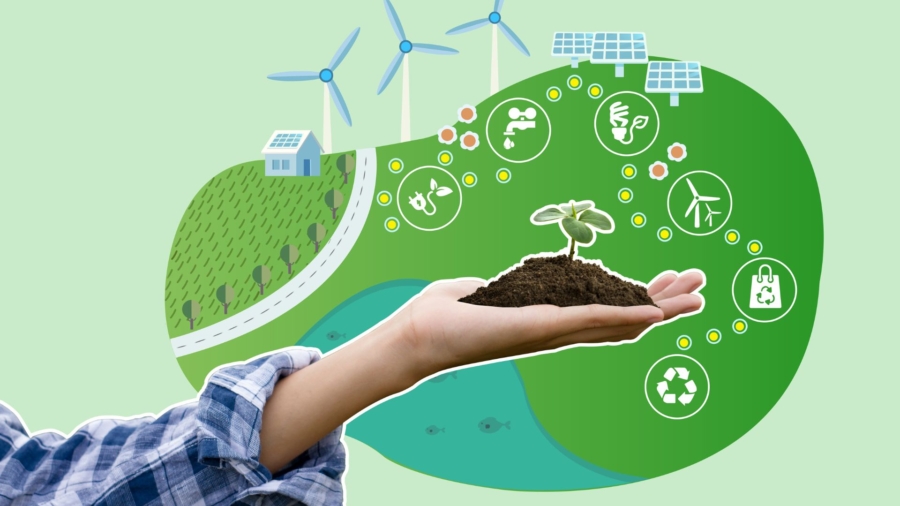The largest GHG emitter is attempting a breakthrough in the global carbon market… what should the world expect?
China, the world’s largest emitter of greenhouse gases – responsible for 31.1% of the world’s total in 2023 [6] , has recently drawn international attention with major updates to its carbon credit system. Supported by several pilot programs and policy reforms, this ambitious carbon market, often dubbed the “Great Wall of Carbon”, could reshape carbon trading globally. This article delves into the structure of China’s carbon market, recent developments, challenges, geopolitical implications, and what lies ahead. [2], [3]
Understanding Carbon Markets
Carbon markets enable the trading of carbon credits, with each credit representing one tonne of CO₂ or an equivalent reduction in greenhouse gases. There are two main types of carbon markets: compliance markets, where participation is required by law, and voluntary markets, where organizations offset emissions on their own initiative. Companies and individuals can purchase these credits to offset their emissions by supporting projects that reduce or avoid emissions elsewhere. Once a credit is used, it becomes a credit that cannot be traded again.
The European Union pioneered this approach with the launch of its Emissions Trading System (ETS) in 2005. China introduced the world’s largest ETS in 2021, covering roughly one-seventh of global fossil fuel emissions. Today, numerous countries and regions have developed or are developing similar systems.
The Evolution of China’s Carbon Market & CCER
China’s national ETS builds on seven regional pilot schemes that experimented with various approaches to emissions trading. These pilots helped inform the design of a unified system with broader geographic and sectoral reach. It aims to complement China’s traditional administrative policies with market-based tools to meet energy-saving and carbon intensity goals.The Chinese commitment to peak emissions by 2030 and to be carbon neutral by 2060 the country recognized the “need for an effective market mechanism to drive emissions reductions”; this is where CCER comes in.
The CCER(China Certified Emission Reduction) program runs alongside the ETS, enabling voluntary carbon credit generation and trading. Unlike the ETS, which sets mandatory limits, CCER incentivizes projects that reduce emissions or adopt clean energy technologies. Administered by the Ministry of Ecology and Environment, CCER relies on third-party verification to maintain transparency.[4][2]
In January 2024 the China National Offshore Oil Corporation (CNOOC) purchased 250,000 tonnes of carbon credits, marking the first major voluntary market transaction since CCER’s revival is a very remarkable achievement for a novel organization.
Regulatory and Legal Framework
In early 2024, the State Council issued the “Interim Regulations for the Management of Carbon Emissions Trading,” which provide a clearer legal foundation for China’s ETS. These regulations enhance enforcement and establish stiffer penalties for non-compliance.[3][4]
Plans are underway to expand the ETS to include heavy industries such as cement, steel, and aluminum smelting. The first phase (2024-2026) focuses on familiarizing companies with the system and improving emissions data quality, while phase two (starting in 2027) aims to tighten controls and improve system effectiveness. This expansion could bring 1,500 additional companies into the market, increasing emissions coverage by 3 billion tonnes of CO₂ equivalent.[3][4]
Market Design and Technical Standards
The latest allocation plans refine benchmarks, exclude indirect emissions (like purchases electricity, employee commuting), and limit allowance banking and borrowing. Compliance reporting cycles are also moving from two years to one, encouraging more timely accountability.
Although free allowances based on carbon intensity will initially be granted, this expansion sets the stage for stricter regulation in the future. Technical standards such as the “Guidelines for Accounting and Reporting of Greenhouse Gas Emissions in the Cement Industry” improve data reliability and market transparency.[2]
To avoid double counting, coordination between Renewable Energy Green Power Certificates and the voluntary carbon market has been strengthened through information sharing between the National Energy Administration and the Ministry of Ecology and Environment.
Challenges Ahead
China’s rapid economic development, combined with its heavy reliance on coal, makes cutting emissions especially difficult. Unlike developed countries like Germany or the UK, where economic growth has slowed and emissions are now falling, China still focuses on lowering emissions intensity rather than making deep, absolute cuts. That means it’s trying to produce more with less carbon, rather than simply producing less carbon overall.
In Germany, for example, carbon emissions are capped under the EU’s trading system, and the government has used market-based tools to push utilities away from fossil fuels. Because electricity prices respond to market forces, carbon pricing makes coal and gas more expensive and renewables more attractive. As a result, emissions have fallen even as the economy has grown. But in China, the power sector is still tightly controlled by the government. Prices are often fixed, and power producers don’t always respond to market signals. So even though China has launched a national carbon market, it’s currently designed to cut emissions per unit of output, not total emissions. That means if demand grows, overall emissions can still rise, even if each power plant becomes more efficient.
Moreover, with no absolute cap on emissions which can lead to carbon leakage, limited environment impact, weaker market signals ,reduced credibility and an initial reliance on free permits, near-term emissions reductions may be limited. Monitoring, reporting, and verification systems still need to mature to boost market confidence.
Geopolitical Implications
The EU’s Carbon Border Adjustment Mechanism (CBAM), which taxes carbon-intensive imports, pressures China to strengthen its carbon pricing policies. China has called for multilateral dialogue at the World Trade Organization to address CBAM’s impact on developing economies, using its carbon market as a diplomatic tool balancing environmental and trade goals.[1]
Meanwhile, U.S.-China climate discussions highlight both cooperation and competition, especially in carbon pricing and green technology sectors. China’s state-driven approach contrasts with the U.S. market-driven model, fueling tensions over fair competition and technology transfers. Both countries also pledge significant climate finance contributions, though geopolitical rivalries complicate coordination.[5] Compared to the mature EU ETS, China’s system is still evolving, especially in enforcement and transparency. The U.S. lacks a national ETS but operates smaller regional markets, while India is developing its own carbon trading framework centered on intensity targets. Many developing regions closely watch China and India’s models as potentially more adaptable alternatives to the EU’s highly regulated system. [5]
China’s carbon market faces a pivotal moment. Its ability to expand beyond the power sector, raise carbon prices, enforce penalties, and ensure transparent reporting will determine its impact on emissions reductions. Linking with international markets remains a long-term goal. Success would accelerate China’s path to carbon neutrality by 2060 and strengthen its role in global climate governance. Failure could undermine international carbon pricing efforts and climate diplomacy.Much like the historical Great Wall symbolized China’s defense, today’s carbon market represents a critical barrier against climate change. Its effectiveness will shape China’s emission trajectory and influence global efforts to build a sustainable, low-carbon future. The world watches closely to see whether China’s carbon market becomes a fortress of climate ambition or falls short of its promise.
List of references
1) Compare ETS | International Carbon Action Partnership. https://icapcarbonaction.com/en/compare/99/55. Accessed 11th June 2025.
2) China expands carbon market and refines voluntary emissions reduction mechanisms.
https://climatecooperation.cn/climate/china-expands-carbon-market-and-refines-vol untary-emissions-reduction-mechanisms/. Accessed 11th June 2025.
3) Zeng, Shaolong, et al. China’s carbon trading pilot policy, economic stability, and high-quality economic development. Humanities and Social Sciences Communications. https://www.nature.com/articles/s41599-024-03646-6. Accessed 11th June 2025.
4) Zhang, Xiliang, Runxin Yu, and Valerie J. Karplus. The development of China’s national
carbon market: An overview. https://www.sciopen.com/article/10.26599/ECM.2025.9400015. Accessed 11th June 2025.
5) China’s climate diplomacy in a turbulent world. https://dialogue.earth/en/climate/chinas-climate-diplomacy-in-a-turbulent-world/. Accessed 11th June 2025.
6) The changing landscape of Global Emissions https://www.iea.org/reports/co2-emissions-in-2023/the-changing-landscape-of-global-emissions Accessed 11th June 2025
Extra Readings
7) How is China’s energy footprint changing? https://chinapower.csis.org/energy-footprint/. Accessed 11th June 2025.
8) Carbon Sense Foundation. https://www.carbonsensefoundation.org. Accessed 11th June 2025












